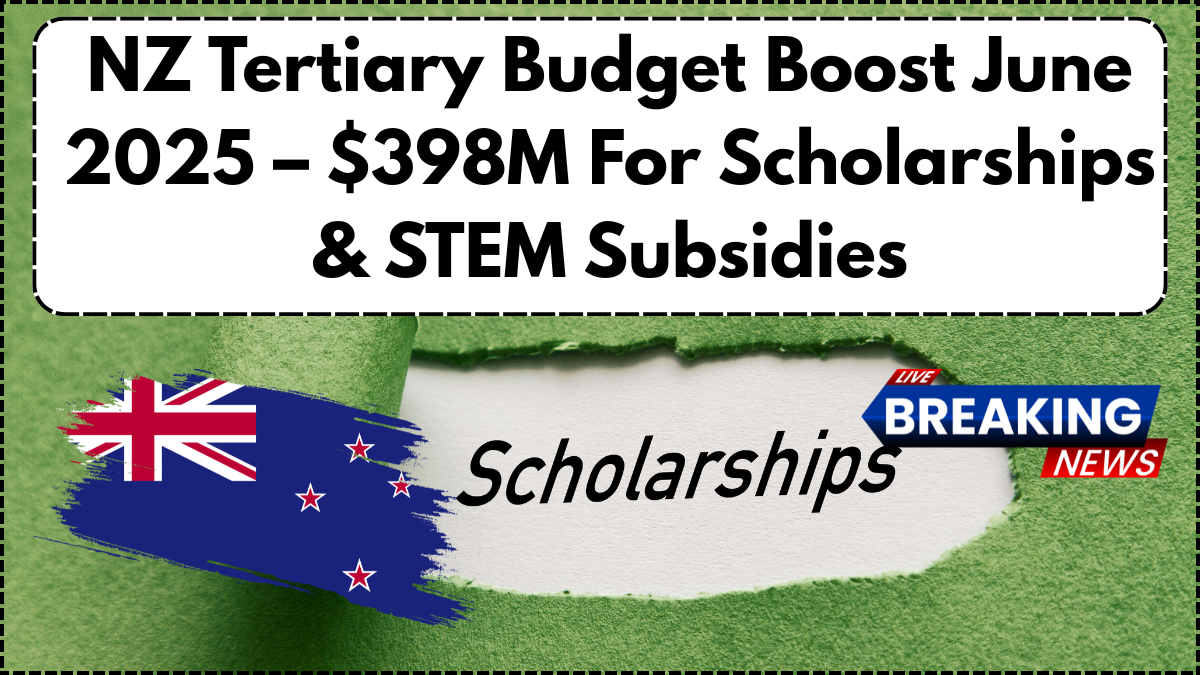In a bold step toward shaping the future of higher education, the New Zealand government announced a massive NZ tertiary budget boost in June 2025. With a staggering $398 million allocated, this funding aims to enhance academic accessibility and future-proof the workforce through expanded scholarships and increased support for STEM programs. The move, hailed as a strategic push for economic resilience and innovation, reflects a commitment to empower both learners and institutions alike.

Breaking Down the $398M Investment: Where the Funds Are Going
The $398 million budget infusion isn’t a blanket allocation — it’s a targeted initiative. A significant portion will subsidize tuition fees in science, technology, engineering, and mathematics (STEM) programs, directly addressing skills shortages and global competitiveness. Scholarships for underrepresented groups — including Māori, Pasifika, and rural students — will see a substantial increase in both volume and value.
Here’s how the funding is divided:
| Allocation Category | Amount (in NZD) | Purpose |
|---|---|---|
| STEM Tuition Subsidies | $210 million | Reduce student costs in science and tech disciplines |
| Merit & Equity Scholarships | $120 million | Increase access for high-performing and underserved groups |
| Infrastructure & Tech Grants | $48 million | Upgrade campus facilities and digital learning platforms |
| Research Internships & Industry Links | $20 million | Strengthen hands-on training and academic-industry ties |
Education Funding Redefined for Future Readiness
This round of education funding represents more than just numbers. The government is intentionally shifting gears to align tertiary education with workforce demands. With global industries increasingly reliant on digital tools and technical proficiency, the prioritization of STEM reflects a forward-facing strategy.
Institutions will receive structured incentives to design curricula that embed real-world applications and tech fluency. The rise in tuition subsidies ensures that cost is no longer a barrier to entry for ambitious learners pursuing high-demand fields.
What This Means for Students in July 2025 and Beyond
For current and prospective tertiary students, July 2025 marks a turning point. Universities and polytechnics are already adjusting their enrollment outreach, emphasizing the financial advantages now in play. Students entering qualifying STEM programs may see tuition reduced by up to 40%, while scholarship recipients could receive up to $12,000 annually — a substantial leap from prior figures.
Moreover, this NZ tertiary budget boost June 2025 includes cross-sectoral programs that support internships in IT firms, engineering firms, and biotech startups, further ensuring that graduates are employment-ready.
Institutions Welcome the Push With Cautious Optimism
Academic leaders are optimistic, though some urge careful implementation. While the rise in education funding is broadly welcomed, they emphasize the need for continued oversight to prevent bottlenecks in infrastructure readiness. The fast-tracked timeline for spending requires a collaborative approach across government, academia, and industry to ensure long-term gains.
Private sector partners have also expressed interest in co-funding select initiatives, particularly in regional institutions aiming to bridge talent gaps locally. This development could magnify the impact of the budget beyond initial projections.
FAQs
What is the NZ tertiary budget boost June 2025?
It’s a government initiative announced in June 2025 allocating $398 million to enhance tertiary education in New Zealand through scholarships, tuition subsidies, and institutional upgrades.
Who benefits from the increased education funding?
Students in STEM fields, especially from underrepresented backgrounds, and institutions focused on innovation and regional development are primary beneficiaries.
How much will tuition subsidies rise?
For eligible STEM programs, tuition subsidies could reduce fees by up to 40%, making technical education more affordable.
Are scholarships only for academic merit?
No. The new scholarships cover both merit-based and equity-based criteria, targeting groups traditionally underrepresented in higher education.
When will students see these changes?
Starting from the July 2025 semester, new and returning students will begin to access enhanced financial support and restructured academic pathways.
Click here to learn more
Aanchal is a skilled content writer with a flair for creating compelling and engaging stories. With a keen understanding of her audience, she crafts content that informs, inspires, and connects on a deeper level. From blog posts and articles to marketing copy, she brings both creativity and precision to every piece. Her expertise helps our brand communicate with clarity and leave a lasting impression.



